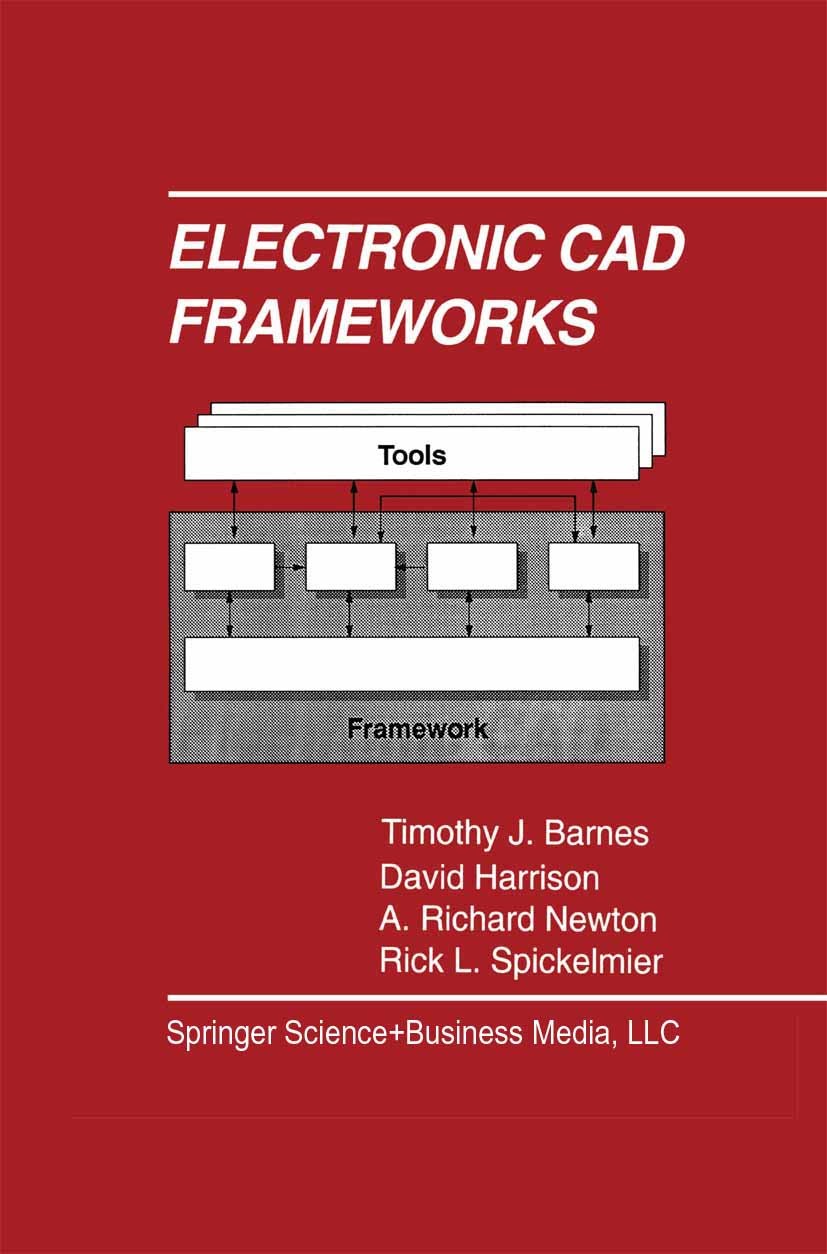| 书目名称 | Electronic CAD Frameworks |
| 编辑 | Timothy J. Barnes,David Harrison,Rick L. Spickelmi |
| 视频video | http://file.papertrans.cn/307/306218/306218.mp4 |
| 丛书名称 | The Springer International Series in Engineering and Computer Science |
| 图书封面 |  |
| 描述 | When it comes to frameworks, the familiar story of the elephant and the six blind philosophers seems to apply. As each philoso pher encountered a separate part of the elephant, each pronounced his considered, but flawed judgement. One blind philosopher felt a leg and thought it a tree. Another felt the tail and thought he held a rope. Another felt the elephant‘s flank and thought he stood before a wall. We‘re supposed to learn about snap judgements from this alle gory, but its author might well have been describing design automation frameworks. For in the reality of today‘s product development requirements, a framework must be many things to many people. xiv CAD Frameworks: Integration Technology for CAD As the authors of this book note, framework design is an optimi zation problem. Somehow, it has to be both a superior rope for one and a tremendous tree for another. Somehow it needs to provide a standard environment for exploiting the full potential of computer-aided engineering tools. And, somehow, it has to make real such abstractions as interoperability and interchangeability. For years, we‘ve talked about a framework as something that provides application-oriented services, |
| 出版日期 | Book 1992 |
| 关键词 | Software; Standard; computer-aided design (CAD); development; integrated circuit |
| 版次 | 1 |
| doi | https://doi.org/10.1007/978-1-4615-3558-4 |
| isbn_softcover | 978-1-4613-6580-8 |
| isbn_ebook | 978-1-4615-3558-4Series ISSN 0893-3405 |
| issn_series | 0893-3405 |
| copyright | Springer Science+Business Media New York 1992 |
 |Archiver|手机版|小黑屋|
派博传思国际
( 京公网安备110108008328)
GMT+8, 2025-12-31 10:18
|Archiver|手机版|小黑屋|
派博传思国际
( 京公网安备110108008328)
GMT+8, 2025-12-31 10:18


